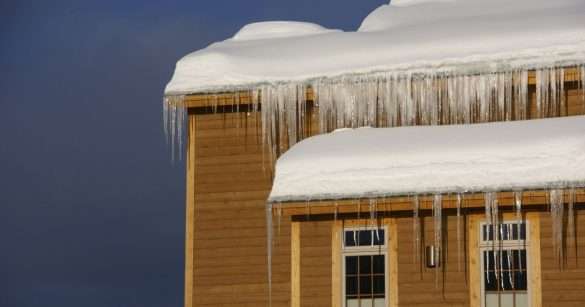Table of Contents
As the temperatures drop in winter, keeping your home safe and warm is essential. While snow and ice accumulation may excite many, it can also present a significant challenge to homeowners who experience icicles forming on their houses or other buildings.
With an understanding of what causes icicles and how to handle them when they appear, you can confidently tackle any problems that might arise due to these often intimidating-looking formations. Read on to learn more about the implications behind signs of icicles on your home and how best to mitigate them.
Why Is the Appearance of Icicles Alarming?
Icicles are typically seen as beautiful, natural winter decorations. However, they can also be a warning sign of potential problems with your home.
If left unchecked, icicles can cause damage to your gutters, roof, and foundation. They can also pose a danger to people below if they fall off in large sizes or quantities.
Another reason the appearance of icicles may be alarming is that they are often an indicator of poor insulation and ventilation in your home. This can lead to higher energy bills, as your heating system must work overtime to keep the indoor temperature comfortable.
So, why do icicles form in the first place? Typically, they result from snow or ice melting on your roof and refreezing as it drips off the edge. This can happen due to heat escaping from your attic and melting the snow on top of your roof or from direct sunlight, causing a similar effect.
How Can You Prevent Icicles From Forming?
Preventing icicles from forming on your home involves maintaining good insulation, ensuring proper ventilation, and taking specific measures during winter weather. By understanding and applying these strategies, you can minimize the risk of icicle formation and its associated problems. Let’s delve into the details.
Good Insulation is Key
Proper insulation is essential to keep your home warm and prevent icicles from forming. The most critical areas to insulate are your attic and ceiling, as heat escaping from these spaces can melt the snow on your roof and contribute to icicle formation. Make sure that you have adequate insulation in these areas, and consider adding more if necessary.
Ensuring that the attic is well insulated is important, as it also helps prevent ice dams from forming on your roof. These thick ridges of ice can trap melting snow and cause water to leak into your home.
Ensure Proper Ventilation
Proper ventilation and insulation are crucial in preventing icicles and other winter-related problems. Adequate ventilation allows cold air to circulate and keeps the temperature inside your attic consistent, preventing snow from melting and forming icicles. It also helps prevent moisture buildup, leading to mold growth and damage to your home’s structure.
Taking Measures During Winter Weather
During particularly cold or snowy weather, there are additional steps you can take to minimize icicle formation in your home. Clearing snow off your roof regularly can help prevent it from melting and refreezing, thus reducing the risk of icicles.
Conclusion
Icicles may be a beautiful sight, but they can also cause significant damage to your home if left unchecked. By understanding why they form and how to prevent them, you can keep your home safe and warm during winter.
Remember to maintain proper insulation and ventilation and take extra precautions during harsh weather conditions. With these measures, you can enjoy a cozy and worry-free winter season. Always be vigilant about any signs of icicles on your home and take prompt action to address them accordingly.
